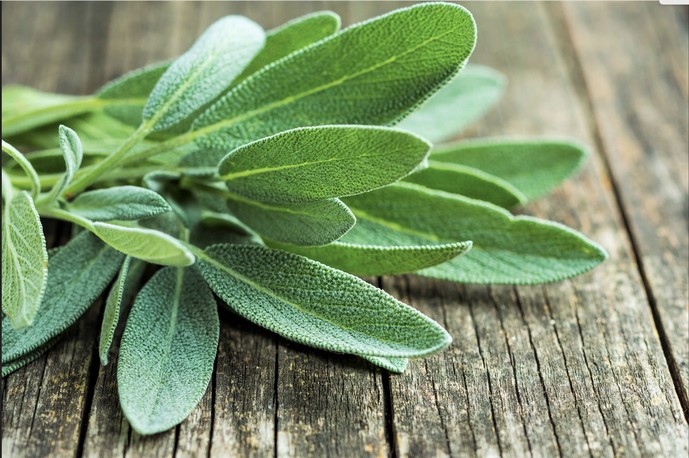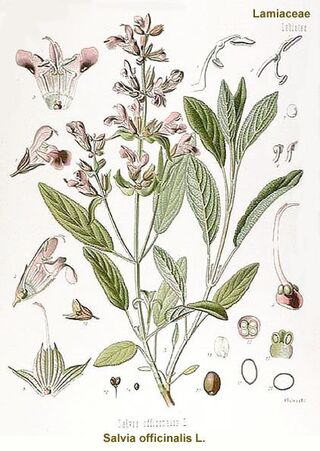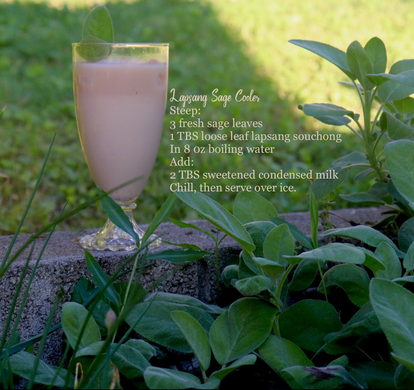 In my herb garden a beautiful garden sage (Salvia officinalis) is spreading prolifically and is just about ready to bloom. This herb is familiar to most of us as a culinary herb, and its pungent scent is always reminiscent of the Thanksgiving dinner table, but a host of healthful benefits and traditional medicinal uses make sage an herb that deserves to be enjoyed throughout the year, not just in November.  The name “sage” is an Old French derivation of the plant’s latin name, salvia, which literally means healing plant, a name that aptly reflects both the modern medicinal uses of sage and the historical belief that sage could heal just about anything. Traditionally it was used as a natural bandage and considered an essential herb for wound healing, it was believed to enhance memory and knowledge, and even to lengthen life, a theory which inspired the old English rhyme, “He that would live for aye, must eat sage in May.” Sage has been found to be very high in nutrients such as vitamin K, iron, calcium, and antioxidants, and to aid in lowering blood sugar and cholesterol. It has long been used to support healthy digestion and is the perfect herb to include in cooking rich and heavy meals, which is most likely where the association with Thanksgiving dinner began. Drinking sage in teas can also soothe a sore throat, relieve stress, and settle an upset stomach, and when consumed regularly in either tea or tincture form, sage has been shown to improve memory and enhance focus and concentration. Sage is also beneficial externally, it has strong anti-inflammatory and antibacterial properties, and is a gentle astringent, making it a wonderful herb to infuse in salves or oils and use topically for skin irritations such as acne, sunburn, and insect bites. The traditional use of sage leaves as a natural bandage is also beneficial, and a simple sage poultice can help prevent infection, reduce swelling, and promote healing of cuts and scrapes.  This silver-green summer herb can be enjoyed throughout the year in a variety of ways, both as a culinary staple and in medicinal remedies. For an unusual, summery sage treat, steep 1 TBS lapsang souchong and 3 fresh sage leaves in 8 oz of boiling water for 5 minutes. Strain, stir in 2 TBS sweetened condensed milk, and chill. Enjoy the unique flavor and healthful benefits of this sage tea over ice! First published in The Tea Lifestyle, July - August 2020
Comments are closed.
|
Do You Have a
|

